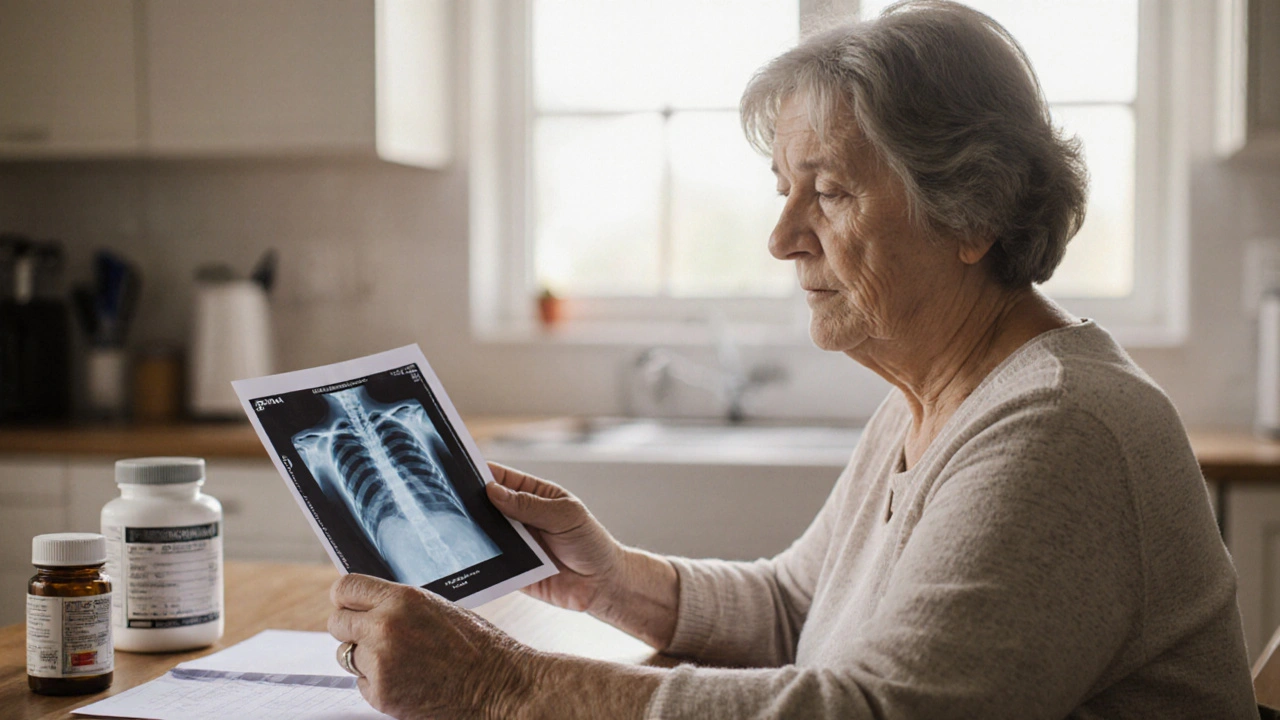Osteoporosis: What it Is and Why It Matters
Osteoporosis makes bones thin and fragile so they break more easily. It often shows no symptoms until a fracture happens. About 1 in 3 women and 1 in 5 men over 50 will break a bone partly because of weak bones. That makes spotting risk factors and taking action early really worthwhile.
How osteoporosis is diagnosed
Your doctor will usually start with questions about fractures, family history, medications (like long-term steroids), and habits such as smoking or heavy drinking. The key test is a DEXA (dual-energy X-ray absorptiometry) scan. It measures bone mineral density and gives a T-score: a T-score of −2.5 or lower is the usual cutoff for osteoporosis. Simple blood tests can check calcium, vitamin D, thyroid function, and other causes of bone loss.
How to lower your risk and treatment options
Prevention and treatment work together. Small regular steps add up.
Diet and supplements: Aim for about 1,000–1,200 mg of calcium daily from food and supplements combined, depending on age and sex. Vitamin D helps your body absorb calcium; many adults take 800–1,000 IU daily, but blood tests can guide the right dose for you. Talk with your doctor before starting supplements.
Exercise: Weight-bearing moves (walking, jogging, stair climbing) and strength training (resistance bands, light weights) help build and keep bone. Balance and core work—like tai chi or simple standing-leg drills—reduce fall risk.
Medications: If your fracture risk is high, drugs can cut that risk. Common first-line medicines are bisphosphonates (alendronate, risedronate). Other options include denosumab, teriparatide, and selective estrogen receptor modulators in specific cases. Each drug has pros and cons—discuss side effects, how long to stay on treatment, and stopping plans with your clinician.
Lifestyle changes: Quit smoking, limit alcohol, and fall-proof your home—remove loose rugs, add grab bars, improve lighting, and wear shoes with good grip. Even small home fixes lower fracture risk a lot.
What to watch for: New, sudden back pain could be a spine fracture. Losing height or getting a curved upper back (kyphosis) are red flags. After any low-impact fracture, ask for a bone health check—treating early prevents more breaks.
Follow-up: Bone density can be rechecked every 1–2 years depending on treatment and risk. Keep a medication record and review it annually with your doctor. If you have other conditions (thyroid disease, rheumatoid arthritis) that affect bone, coordinate care between providers.
Want a quick next step? Book a DEXA scan if you’re over 65 (women) or 70 (men), or earlier if you have risk factors. Strengthen bones with two short exercise sessions most days, and talk to your clinician about calcium, vitamin D, and whether you need medication. Small steps now save you from a painful fracture later.
Osteoporosis and Mental Health: How Chronic Bone Loss Affects Your Mood
Explore how osteoporosis impacts mental health, recognize psychological symptoms, and discover practical coping strategies for living with this chronic condition.
Read moreThe Impact of Bromocriptine on Bone Health
Bromocriptine is a medication that has caught my attention lately due to its impact on bone health. Studies suggest that it can negatively affect bone density, making them more prone to fractures. This is particularly concerning for people with pre-existing conditions like osteoporosis. It's essential for patients and doctors to discuss the potential risks and benefits of using this drug. In conclusion, while Bromocriptine can be helpful for certain conditions, it's crucial to weigh its effects on bone health before starting treatment.
Read more

